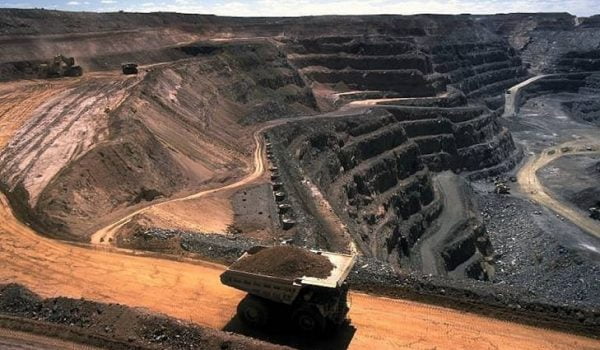Need for mining players to merge forces

Mining is one of Zimbabwe’s largest foreign currency earners, contributing more than 60% of the forex earnings. It also constitutes about 15% of gross domestic product (GDP), between 8 to 12% of government revenue and more than 500 000 formal jobs, according government reports.
But sadly, the sector is currently facing a plethora of challenges which have seen some mining companies downsizing or shutting down altogether. For those mines to be revived there is need for collaboration between mining players themselves.
For instance, those that are currently afloat like Caledonia Mining Corporation, Zimplats, Mimosa, Africa Chrome Fields, Zimasco, Asa Resource Plc, Makomo Resources, Zimbabwe Consolidated Diamond Mining Company among others, could join forces and revive dormant mines.
That could be done through partnerships or mergers and acquisitions. When mergers or acquisitions occur, they create some of the largest mining powerhouses in the world and can have an everlasting impact on the industry.
Examples of mergers and acquisitions
The most recent of the biggest mining mergers, according to Mining Technology, is the Canada-based Barrick Gold which announced its acquisition of Randgold Resources for around $18 billion on 24 September 2018. The merger will create the world’s biggest gold mining company, with a combined production capacity of 6.6 million ounces of gold per year.
On May 2, 2013, multinational mining company Glencore completed the acquisition of Anglo-Swiss mining company Xstrata, in a deal worth around $90billion. The merger created one of the world’s largest natural resources conglomerates, with a combined workforce of 190,000 people across 50 nations, and a portfolio of 90 commodities, including copper, barley, oil, and vanadium, according to Mining Technology.
Anglo-Australian mining giant Rio Tinto in July 2007 acquired Alcan in a deal worth $38.1billion, making it the world’s largest producer of aluminium and bauxite at the time. Two of China’s largest state-owned enterprises, Shenhua Group and the China Guodian Corporation, according to media reports, completed a merger on 20 November 2017, valued at almost $273 billion. These are some of the mergers and acquisitions (M&A) that have taken place around the world and Zimbabwe can do it too.
The mining sector is now ripe for M&A, given the amount of pressure it has been under.
Struggling mines needing revival
Some of the struggling mining companies include Metallon Gold Corporation which owns How Mine, Shamva, Mazowe and and Redwing mines. Some include Sabi Gold Mine, Jena Gold Mines, Elvington Gold Mine, Shabanie Mine, Kamativi Tine Mines, Bikita Mine, Sandawana Mine, Lynx Mine, R.H.A. Tungsten Mine among others.
Metallon Gold Corporation used to produce about 50 percent of Zimbabwe’s gold output but is currently struggling
Last year in September, the mining concern rolled out a massive retrenchment exercise at its four mines in Zimbabwe namely How Mine, Shamva, Mazowe and Redwing in a bid to arrest mounting operational costs.
The miner reportedly owes workers salary arrears running into millions of dollars, accumulated over the past few years.
Sabi Gold Mine was placed under judicial management, following the suspension of operations in 2014 and it still faces debt problems and also needs a massive cash injection to ramp up operations.
The mine is located in Zvishavane in the Midlands and it operates one rectangular double compartment shaft reaching down to 15 metres below a 12 level elevation.
There is also Jena Gold Mines located in Silobela, 60 km outside Kwekwe, central Zimbabwe. It operates a multi shaft system and has a capacity to treat 450 tons of ore per day.
Elvington Gold Mine which is about 100 km west of the capital Harare suspended operations in 2003 due to the collapse of one of its main shafts. The mine is on care and maintenance. Elvington used to produce 45kgs of gold per month before the shaft incident.
Shabanie Mine, located in Zvishavane in the Midlands province, used to be one of the biggest employers with over 2 000 workers, but was shut down closed in 2004, due to low demand of white asbestos.
Kamativi Tine Mines, a wholly owned subsidiary of Zimbabwe Mining Development Corporation, closed operations in 1994 after 58 years of operation. The closure of the mine was prompted by the fall of the price of tin, the state miner has said. In its heyday, it produced tin and other by-products including tantalite niobium and lithium minerals. Kamativi mine is having renewed interest because of the firming tin prices and the large suite of minerals associated with tin.
Bikita Mine is located in southern Zimbabwe in province, about 80 km east of Masvingo town. It is one of the largest lithium mines in Zimbabwe. It is home to reserves amounting to 10.8 million tons of lithium ore grading 1.4% lithium thus resulting in 0.15 million tons of lithium.
Sanyati Copper Mine, located in Kadoma District, owns three copper mines, namely Sanyati Mine and Alaska Copper mines, Mhangura Copper Mines and Lomagundi Mines but they were mothballed due to a slump in copper prices and an unfavourable economic and policy environment.
Sandawana Mine is located nearly 100 km south of Zvishavane town in the Mberengwa district in the southern part of Zimbabwe, suspended in 2011. The mine hosts part of the Mweza Greenstone Belt and has great potential for emeralds, gold, tantalite, beryl, iron ore, silver, niobium, lithium, chrome, tin and slate. It consists of a number of emerald deposits including Ceres, Athene, Eros, Marmaid, Junc, Zeus, Atom, Plato, and Vulcan among others.
The Karoi-based graphite mine, Lynx Mine, is under care and maintenance. Production was discontinued in September 2017, with lack of capital being cited.
R.H.A. Tungsten Mine is located 270km south of Bulawayo, Zimbabwe’s second biggest city, and is owned by AIM-listed Premier African Minerals. Operations at the mine were suspended in January as the company said it was negotiating with a state empowerment company on a new funding model after the indigenisation law was relaxed by the new government.
Challenges facing mining sector
Mining is capital intensive and as a result, mining companies are struggling to raise funds for recapitalization.
According to Chamber of Mines of Zimbabwe chief executive officer Isaac Kwesu, the sector requires about $11 billion.
Some of the challenges affecting mining sector in Zimbabwe include a fall in the global prices of minerals, unfavorable economic conditions, electricity supply, shortages of foreign currency, general rise in the cost of inputs, shortage of capital, international market movements, operational costs and steep tax rates among other problems.
This article first appeared in Mining Zimbabwe Dec 2018 issue.


